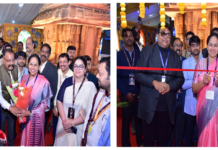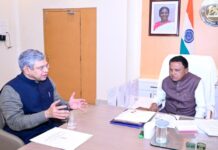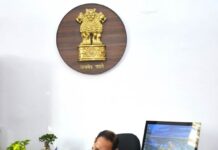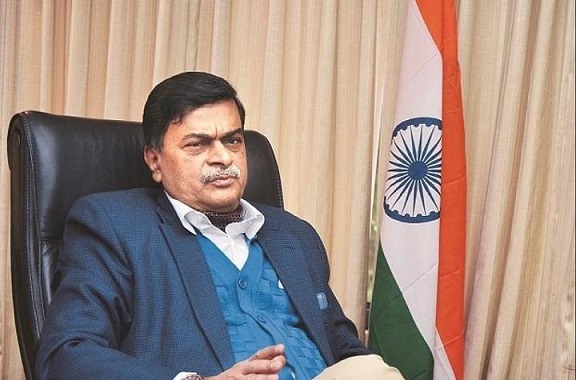By Our Correspondent
NEW DELHI/BHUBANESWAR: Union Minister for Power and New and Renewable Energy, R.K. Singh in a written reply in Rajya Sabha on Tuesday said that the Government of India had set a target of 1,75,000 MW installed capacity from renewable sources by the year 2022 which includes 1,00,000 MW from Solar, 60,000 MW from Wind, 10,000 MW from Biomass and 5000 MW from Small Hydro. As on 30.06.2021, the total capacity of Renewable Energy installed: under installation and under tied was 96.95 GW. This does not include large Hydro, which is also renewable. As on 30.06.2021, the total power generation capacity installed from non-fossil fuel sources was 150.06 GW; which is 39% of the total installed capacity. Therefore, India is well in its way to achieving, and surpassing its nationally determined contribution (NDC) target which was 40% capacity by non fossil-fuel sources by 2030.
Further, to promote the renewable energy sources, the following steps have been taken:Waiver of inter-State transmission charges on transmission of the electricity generated from the solar and wind sources, for projects to be commissioned upto 30th June 2025.Green energy corridors have been developed to evacuate power from the Renewable Energy Sources.Renewable Purchase Obligation Trajectory has been notified with the objective of creating renewable power capacity of 175 GW by year 2022.
As per Para 8.4.3 of Tariff Policy 2016 “the Appropriate Commission may provide incentives to encourage metering and billing based on metered tariffs, particularly for consumer categories that are presently unmetered to a large extent. The metered tariffs and the incentives should be given wide publicity. Smart meters have the advantages of remote metering and billing, implementation of peak and off-peak tariff and demand side management through demand response. These would become essential in future for load-generation balancing due to increasing penetration of intermittent type of generation like wind and solar power.
Appropriate Commission shall, therefore, mandate smart meters for:(i) Consumers with monthly consumption of 500 units and more at the earliest but not later than 31.12.2017(ii) Consumers with monthly consumption above 200 units by 31.12.2019”.The aims and objectives of installing Smart Meters are to help consumers in seamless online billing process & digital payment of bills; having access to real time tracking of electricity usage; helping consumers track their consumption patterns and adopt more energy-efficient behaviours and appliances; offering them an option to pre-pay for electricity based on their requirements and thus be in control of their total energy spends; enable time of day metering and thus, playing a pivotal role in the integration of renewable power; helping DISCOMs function remotely by eliminating manual collections and reduced AT&C losses.
Under National Smart Grid Mission (NSGM), 7.23 lakh smart meters have been sanctioned. State-wise/project-wise details are as under:Chandigarh (Sub Division 5 Project) – 29500 installation is in progress and is scheduled to be completed by March 2022.Chandigarh (Complete City Project) – 184000 scheduled to be completed by March 2022.Jharkhand (Ranchi City Project) – 360000 tendering is in process and is scheduled to be completed by March 2024.Rajasthan (6 towns Integrated Project) – 150000 installation is in progress and is scheduled to be completed by March 2022.





























